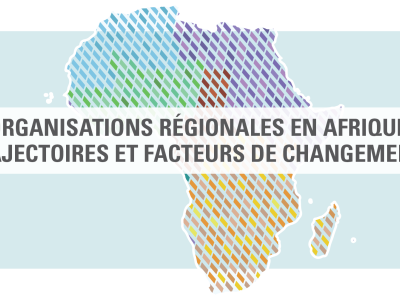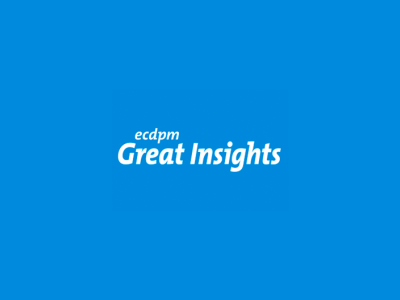
Sahel strategies compared: Third donors conference on Mali – Comparative advantages or international cooperation jungle?
Coordinating various strategies in the Sahel will allow donors and partners to build their legitimacy in responding to complex security and development threats in the region.
This page is also available in French.
The third donors’ conference on Mali and the second meeting of the international coordination platform for Sahel took place this week in Bamako. Dozens of international organisations and donors are trying to implement their Sahel strategies to respond to the complex security and development threats in the region.
In this, the first in a series of four blogs building on a comparative analysis of existing international strategies for the Sahel aims to identify key challenges ahead for their implementation and ultimately the achievement of their key goal: improving peoples’ lives in the region.
Contemporary insecurity, poverty, fragility, organised crime and governance challenges in the countries of the Sahel/North-West Africa are often analysed as phenomena requiring local, national and regional responses. International cooperation initiatives and financial support have continuously been initiated and implemented in the last few decades. Civil society organisations and networks have developed their experience and practice learning the benefits of multidisciplinary work and regional cooperation.
Since conflicts erupted in Mali in 2012, humanitarian emergencies are still high on the agenda despite indications that some refugees and internally displaced people may now envisage to return to their home. These conflict-induced movements of population had followed turmoil in Libya after the 2011 NATO military intervention there, and threats spilled over in myriad ways.
In the last few years, several regional and international organisations such as the European Union, the United Nations, the World Bank, the African Development Bank and ECOWAS, along with countries such as France, have published their strategies. The African Union is also developing its own strategy.
An Overall Strategy Lost in The Sand?
The Sahelian strategic landscape has become crowded with these strategic approaches, raising questions about their relevance, their consideration for each other and their usefulness in the years to come, while large amounts of aid are being committed to the region, including 1.5 bn USD from the World Bank, and new projects worth around 4 bn USD were announced by the AfDB in November 2013.
ECDPM embarked on a comparative analysis of existing strategies with the view to support diplomatic efforts in the region by focusing on the link between policy and development practice.
This evolving comparative analysis of international strategies for the Sahel focuses on a series of key variables:
Scope of the Strategies
Most of the strategies’ overarching goals fall into three categories:
1) Achieving security and stability
2) Promoting development (political and socio-economic), and/or
3) (re) building resilience and addressing vulnerability. As much as providing key objectives, strategies serve also the purpose of packaging what each organisation is able or has already started to do under a narrative ‘chapeau’.
Most of Sahel strategies are multi-disciplinary, multi-dimensional and holistic in their approach as a result of consultation with the countries’ concerned. While this may be theoretically re-assuring, it may also create a risk of dilution of responsibilities and accountability. The main challenge in the Sahel will be to ensure sustainable synergies between all implementing agencies.
The Geographical Meaning of the Sahel
Strategies tend to cover three core countries (Mali, Mauritania and Niger) but their geographical scopes vary greatly over time, from the Atlantic Ocean to the Red Sea (in the case of the African Union). With the exception of the African Union’s strategy that includes Algeria and Libya, a commonality is the relative absence of clearly functioning cooperation frameworks with North Africa shows a variety of mental maps applied to the Sahelo-Saharian space and Sahelo-West African areas. Yet, a persistent volatile environment in Northern Mali remains at the epicentre of international mobilisation.
Linkages Between Strategies, Funding, Implementation and Evaluation
With few exceptions like the World Bank, the EU and the AfDB , most strategies until February 2014 did not present detailed analysis of the financial means required for implementation. Documents usually concerned already committed funds and on-going initiatives or potential programmes to be implemented with the support of funding partners. Action plans are work in progress (the African Development Bank launched a Sahel Action Fund) and updated information was shared at this week’s coordination platform in Bamako. Strategies also rarely mention specific monitoring and evaluation mechanisms based on lessons learnt from previous experiences of international cooperation in the region.

Cooperation, Coordination and Burden Sharing with Sahelian and other International Actors
The lack of coordination is often mentioned as a challenge in several strategies, which in turn have suggested their own coordination mechanisms. A serious risk of anarchy in international support existed until November 2013, when intense diplomatic discussions led to the adoption of a coordination platform chaired by a country of the region (Mali until 2016) and supported by a joint AU-UN technical secretariat.
In early 2014 some countries and organisations, including ECOWAS and CENSAD, set up or proposed other initiatives to coordinate actions in the region. A new initiative is notably the G5 group of Sahel states, launched in February 2014 and gathering the heads of states of Burkina Faso, Chad, Mali, Mauritania and Niger under the presidency of Mauritania.
Given the variety of coordination frameworks, the risk of duplication cannot be excluded. The main question is how will various coordination mechanisms build their legitimacy over time? This will be examined in our next blogs on international strategies for the Sahel.
The views expressed here are those of the authors, and may not necessarily represent those of ECDPM.

